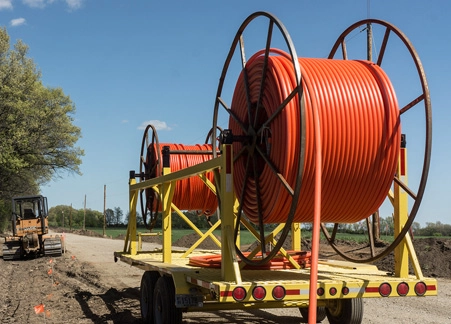
-
 Afrikaans
Afrikaans -
 Albanian
Albanian -
 Amharic
Amharic -
 Arabic
Arabic -
 Armenian
Armenian -
 Azerbaijani
Azerbaijani -
 Basque
Basque -
 Belarusian
Belarusian -
 Bengali
Bengali -
 Bosnian
Bosnian -
 Bulgarian
Bulgarian -
 Catalan
Catalan -
 Cebuano
Cebuano -
 Corsican
Corsican -
 Croatian
Croatian -
 Czech
Czech -
 Danish
Danish -
 Dutch
Dutch -
 English
English -
 Esperanto
Esperanto -
 Estonian
Estonian -
 Finnish
Finnish -
 French
French -
 Frisian
Frisian -
 Galician
Galician -
 Georgian
Georgian -
 German
German -
 Greek
Greek -
 Gujarati
Gujarati -
 Haitian Creole
Haitian Creole -
 hausa
hausa -
 hawaiian
hawaiian -
 Hebrew
Hebrew -
 Hindi
Hindi -
 Miao
Miao -
 Hungarian
Hungarian -
 Icelandic
Icelandic -
 igbo
igbo -
 Indonesian
Indonesian -
 irish
irish -
 Italian
Italian -
 Japanese
Japanese -
 Javanese
Javanese -
 Kannada
Kannada -
 kazakh
kazakh -
 Khmer
Khmer -
 Rwandese
Rwandese -
 Korean
Korean -
 Kurdish
Kurdish -
 Kyrgyz
Kyrgyz -
 Lao
Lao -
 Latin
Latin -
 Latvian
Latvian -
 Lithuanian
Lithuanian -
 Luxembourgish
Luxembourgish -
 Macedonian
Macedonian -
 Malgashi
Malgashi -
 Malay
Malay -
 Malayalam
Malayalam -
 Maltese
Maltese -
 Maori
Maori -
 Marathi
Marathi -
 Mongolian
Mongolian -
 Myanmar
Myanmar -
 Nepali
Nepali -
 Norwegian
Norwegian -
 Norwegian
Norwegian -
 Occitan
Occitan -
 Pashto
Pashto -
 Persian
Persian -
 Polish
Polish -
 Portuguese
Portuguese -
 Punjabi
Punjabi -
 Romanian
Romanian -
 Russian
Russian -
 Samoan
Samoan -
 Scottish Gaelic
Scottish Gaelic -
 Serbian
Serbian -
 Sesotho
Sesotho -
 Shona
Shona -
 Sindhi
Sindhi -
 Sinhala
Sinhala -
 Slovak
Slovak -
 Slovenian
Slovenian -
 Somali
Somali -
 Spanish
Spanish -
 Sundanese
Sundanese -
 Swahili
Swahili -
 Swedish
Swedish -
 Tagalog
Tagalog -
 Tajik
Tajik -
 Tamil
Tamil -
 Tatar
Tatar -
 Telugu
Telugu -
 Thai
Thai -
 Turkish
Turkish -
 Turkmen
Turkmen -
 Ukrainian
Ukrainian -
 Urdu
Urdu -
 Uighur
Uighur -
 Uzbek
Uzbek -
 Vietnamese
Vietnamese -
 Welsh
Welsh -
 Bantu
Bantu -
 Yiddish
Yiddish -
 Yoruba
Yoruba -
 Zulu
Zulu


Sep . 16, 2024 13:06 Back to list
Understanding Electroscopes
Understanding the Electroscope A Key Tool in Electricity Education
The electroscope is a simple yet fascinating instrument that has been instrumental in the study and demonstration of electrical principles since its invention in the 18th century. This device serves as one of the earliest methods for detecting the presence and magnitude of electric charge, making it a staple in both educational settings and scientific demonstrations.
At its core, the electroscope consists of a metal rod connected to two thin metal leaves, typically made from gold or aluminum. These leaves are housed within a glass container to prevent air currents from affecting their movement. When an object with an electric charge is brought near the electroscope, the charge induces a reaction in the metal rod, which causes the leaves to diverge due to the like charges repelling each other.
Understanding the Electroscope A Key Tool in Electricity Education
Electroscopes can be classified into two main types the simple and the gold-leaf electroscope. The simple electroscope typically consists of a metal conductor and two pieces of foil hanging from the bottom. The gold-leaf electroscope is a more sensitive version featuring fine gold leaves that can respond to very small charges, making it particularly valuable for demonstrating concepts in electrical theory.
electroscope electrical

One of the significant advantages of using an electroscope in educational settings is its ability to visually demonstrate electrical concepts like charging by induction and conduction. For instance, when a charged rod is brought close to the electroscope without touching it, students can observe how the leaves move due to the induced charges, making the abstract concepts of electricity more tangible and easier to understand.
While the electroscope is a simple device, it brings attention to the foundational principles of electricity, including charge transfer, conductivity, and the behavior of charged particles. Further experiments with the electroscope can include demonstrating the differences between conductors and insulators by testing various materials to see if they affect the electroscope's charge.
Moreover, the electroscope also paves the way for discussions about static electricity and even the principles of electric fields. These topics are crucial for students who are embarking on their journey through physics and provide a gateway to understanding more complex electrical phenomena.
In conclusion, the electroscope is not only a historical tool but remains relevant in modern education for its simplicity and effectiveness in demonstrating electrical concepts. By observing the behavior of the metal leaves in response to electric charges, students gain insights into the fundamental properties of electricity, setting a solid foundation for advanced studies in physics and engineering. The electroscope’s role in the exploration of electrical principles continues to inspire curiosity and a deeper understanding of the invisible forces at work around us.
Latest news
What Are Construction Tools and How Are They Used?
NewsJul.11,2025
Professional-Grade Duct Rodding Tools for Superior Cable Installation
NewsJul.11,2025
Enhancing Safety and Efficiency with Modern Hot Stick Solutions
NewsJul.11,2025
Empowering Cable Installation with Advanced Rodder Solutions
NewsJul.11,2025
Elevate Your Cable Installation Projects with Cable Pulling Tools
NewsJul.11,2025
Efficient Cable Handling Solutions: Cable Rollers for Sale
NewsJul.11,2025











